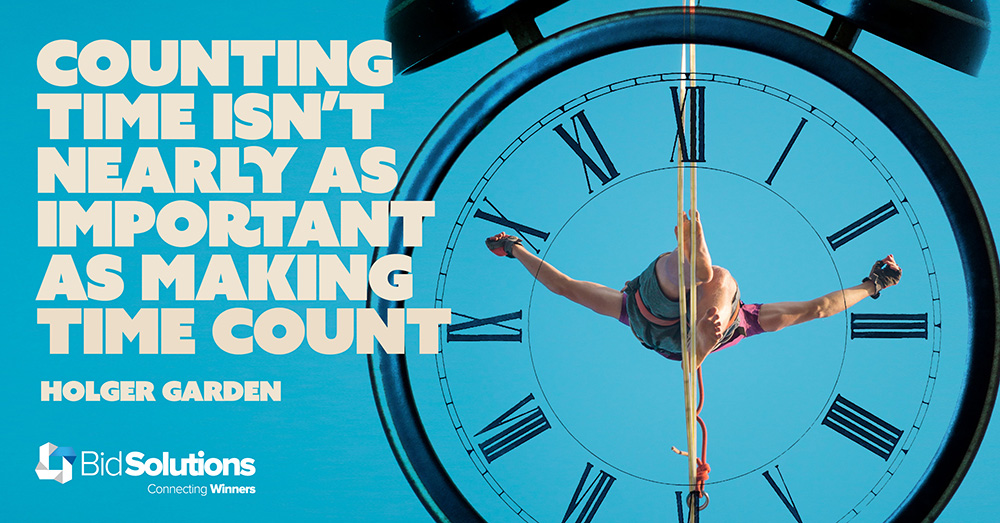
Consultancies in the business of writing responses to bid questions with clients – as employees, partners or work-alone freelancers – must balance new workload with capacity. The balancing act presents a greater challenge in a burgeoning bid market, further amplified when clients request: “Please take on all the writing for us.”
What happens when existing commitments mean it’s not possible to do that?
Being able to help when you can’t do all of it
It’s necessary to discuss how the consultancy can help most effectively when existing workload prevents taking on the whole proposal and the client prefers not to find someone else. This happens when both the client’s trust and the consultancy’s knowledge of the client’s systems, experience and people has grown through strong past performance on previous bids. Clients value such ‘momentum’ because the relationship between in-house and external resources means the bid can ‘hit the ground running’ to a large extent. To enable this, we discuss who can do which parts of the proposal and by when, recognising that neither party has time to do all of it on that occasion. This is about making best use of the consultancy as an external resource.
Developing relationships with clients, so they provide plenty of advance notice of bids, is obviously a sound idea in any market. While robust capture should give clients a good forward view, it’s not always that straightforward: opportunities sometimes present themselves outside of the capture space. Add on a tight timeframe and you now have the need for swift mobilisation when the bid decision is GO.
I’ve found the following three topics important to help determine the division of work when time’s tight.
Win theming and competitor analysis: These fundamental elements of bidding must never be missed out, even under time pressure. A fast way to provide a starting point is to review factors considered appropriate in previous bids in the same sector. Setting times in the diary for online meetings with the clients’ customer- and market-facing colleagues enables past ideas to be challenged and updated for the current bid using latest capture intelligence. The capture might have been through a capture exercise required by a management system, or by less formal interactions that yielded important knowledge. Discussion enables the client’s team to generate ideas by ‘sparking’ off each other (including evidence examples) and by addressing questions I ask to challenge existing thinking (having first read the relevant tender documents). Time-poor – and sometimes initially hesitant – teams feel more confident to start drafting responses or developing ideas once win themes, solutions and competitors’ likely solutions are better understood.
Framework for responses: One reason for being asked to “take on the whole proposal for us” is uncertainty about how to write responses. Having a framework for each response makes a difference, even if it isn’t a full-blown answer plan. Breaking down the question and providing prompts of issues to consider under each heading better equips the internal team to prepare a first draft for my review and editing (which is then returned for further development in response to my flagged-up questions and comments). This iterative approach involving both of us enables the bid to keep ‘moving’ instead of experiencing start-up inertia due to subject matter experts (SMEs) staring at a blank page when they’re already busy. Many SMEs have told me this scenario is a confidence crusher. The iterative approach also enables the client’s internal team to identify what’s important when they don’t see items in my lists they consider necessary: relevance by omission, if you will. That’s why ‘bouncing’ plans off each other is always essential.
Clients have found coaching-style questions helpful for supporting SMEs’ thinking and unlocking new thoughts. Examples are:
- What makes this question important to your client (i.e. the procuring client)? What are the main drivers? What would the person/people have been thinking when they wrote this question?
- What’s the most important aspect of this topic to be considered first? What makes it the most important aspect?
- What benefits to your client, and to the end user, do you envisage from your solution?
- What other steps in the solution rely on this step? How is that order important to your client?
- What challenges do you envisage in delivering your solution? How will you overcome them?
Subject matter expert (SME) availability: By agreeing meeting slots and interim deadlines soon after the client makes contact, we give ourselves milestones to aim for, again to keep the work moving. The response framework proves useful for time-poor SMEs engaged on live projects. It also acts as an agenda of sorts for meetings with SMEs, enabling us to agree who will draft which parts and by when, or which aspects need further research among colleagues.
Time is so powerful; it’s given to us in small quantities only…
…so we have to make the best use of it, which means being smart about how we plan activities. After all, counting time isn’t nearly as important as making time count.
This article was written by Holger Garden .

